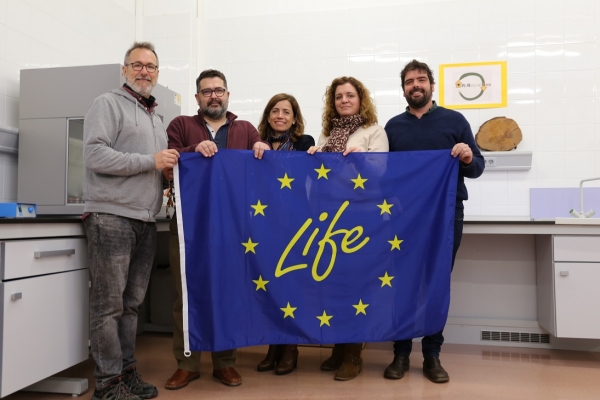The life cycle of buildings, which spans from the extraction of the raw material that will bring them to life, their construction, maintenance, and ultimate demolition, calls for large amounts of energy and natural resources, making the Construction sector one of the biggest consumers of resources in the European Union, emitting 35% of greenhouse gases in the area.
Public administrations, industry companies and the research community are working to create buildings with almost zero energy costs by reducing the unnecessary expenditure of resources, the implementation of new technologies, and renewable energy sources. Through these technologies, once the energy efficiency of the building has been increased, and its environmental footprint reduced to almost zero across its useful life, the challenge is to decrease the energy embedded in the building; that is, the footprint of the materials used in its construction.
To this end, LIFE ReNaturalNZEB – Recycled and Natural Materials and Products – was launched to develop nearly zero-energy buildings with low carbon footprints. In four years it will develop materials and technologies for the Construction sector with a low environmental impact. The use of the kenaf plant, biomass ashes in mortar, and cork, are some of the solutions proposed.
In addition to the introduction of new materials, the aim is to foment the use of some that, although already common in other spheres, are still scarce in Construction, as is the case of wood. The research team at the University of Cordoba working on the project is headed up by Professor Marta Conde, at the Agricultural and Forestry Systems Assessment and Restoration research group of the Forestry Engineering Department. It is assessing the benefits of the use of wood in construction, technically, economically, and from an environmental perspective.
In contrast to other European countries, in Spain the structural use of wood in the construction is not very widespread, as it was supplanted by the use of steel and concrete. The environmental implications of this material, found in many ecosystems of the country, make it ideal for its use for construction, having a positive social and economic impact.
Building houses whose energy consumption is much lower is already having a social impact. Upon employing traditional technologies, trades and skilled labour are recovered and put to use, which has a direct impact on the areas in question, helping to anchor the population to the zones where the materials are extracted and treated. Hence the importance of promoting the use of materials like wood and cork, found extensively in the communities of Andalusia and Extremadura. The consolidation of natural and recycled materials would have a positive impact, therefore, at a social and economic level in communities suffering from chronic problems of unemployment, and would significantly reduce the environmental footprint of construction activity.
This approach is being tested in 10 pilot construction projects (some new building projects and others restoration) in areas of Merida, Badajoz and Portugal. In this way, manuals of good construction practices will be produced and, in the case of the UCO, a guide on wood products for construction too. Through these results public administrations will possess tools for the drafting of codes and legislation, and be able to establish public procurement requirements with a view to environmentally responsible construction of scientific and technical value.
In addition, product seals and statements will clarify the environmental impact of given products, thereby bolstering the value of those materials with a reduced impact and, therefore, the communities in which they are developed.
Â


